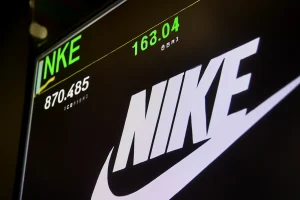Nike Inc. (NYSE: NKE) remains a cornerstone in the athletic apparel and footwear market, with its stock continuing to draw attention from both institutional and retail investors. As a global brand built on innovation, marketing excellence, and performance-driven design, Nike has carved out a dominant presence in the stock market. This article explores the current Nike stock outlook, analyzing growth trends, financial health, recent developments, earnings reports, and broader market insights to help investors make well-informed, strategic decisions.
With a legacy of consistent brand performance and a forward-thinking approach, Nike stock has become a trusted name for long-term investors. The company’s ability to adapt to shifting market trends while maintaining strong revenue growth has reinforced its leadership position. From digital transformation to global expansion, Nike continues to evolve in ways that align with investor expectations. As market dynamics shift, Nike remains a reliable growth stock backed by innovation and strategic execution.
Nike’s Decade of Dominance

Over the past ten years, Nike stock performance has shown steady growth, with a 13% CAGR that highlights its strength as a blue-chip investment. Despite global disruptions and inflation, the Nike share price has remained resilient, rewarding long-term investors. Strategic moves like focusing on direct-to-consumer (DTC) sales helped the brand navigate retail challenges. Strong return on equity (ROE) and consistent earnings growth keep it appealing for diversified portfolios.
Today, the Nike stock price reflects renewed confidence, backed by strong digital sales and a solid earnings report. The company’s innovative edge supports its long-term bullish trend on the NKE stock chart. Nike’s ability to adapt to shifting consumer habits boosts its market sentiment. These factors combined make it a key player in the current stock market landscape.
Nike Stock Forecast
The Nike stock forecast for 2024 and beyond looks promising, with top firms like Goldman Sachs and Morgan Stanley rating it as a “buy” or “overweight.” Analysts expect the Nike stock target price to fall between $115 and $135, driven by earnings per share growth, stronger margins, and continued momentum in direct-to-consumer sales. Despite some short-term volatility during earnings or economic shifts, Nike remains a stable choice compared to other retail sector stocks.
Investor optimism is also fueled by Nike’s focus on data-driven innovation and personalized consumer engagement. These strategies are enhancing digital revenue and strengthening customer loyalty. As Nike leans into tech and analytics, many analysts believe it is entering a phase of sustainable, innovation-led expansion making it an appealing pick for growth-focused investors.
Key Drivers Behind Nike Revenue Growth
Nike’s revenue growth is influenced by several core strategies and global trends:
1.Global Expansion
Nike has strategically increased its presence in emerging markets, particularly in Asia-Pacific and Latin America. China remains a pivotal growth market, contributing significantly to overall sales.
2.Digital Transformation
The company’s investment in its digital ecosystem, including the Nike app and SNKRS platform, has yielded strong direct-to-consumer revenue, now comprising over 40% of total sales.
3.Product Innovation & Collaborations
Nike’s ongoing partnerships with top athletes, influencers, and designers fuel demand and retain consumer engagement.
4.Sustainability Initiatives
The brand’s focus on sustainability and innovation, such as the Move to Zero campaign, aligns with shifting consumer values and supports long-term growth.
5.Strategic Acquisitions
Nike has made key acquisitions, such as predictive analytics firm Celect and inventory optimization platform Invertex, helping enhance its digital and supply chain capabilities.
These elements reinforce Nike’s position as a premium stock in both growth and value portfolios, making Nike stock investment appealing for a range of investor profiles.
Nike Financials & Quarterly Results
Nike’s financials present a robust outlook for 2024. In the most recent Nike earnings report, the company reported:
- Total revenue of $13.6 billion, a 6% increase year-over-year
- Net income of $1.33 billion, exceeding analyst expectations
- EPS of $0.87 vs. a projected $0.81
- Gross margins at 43.7%, supported by high-margin direct-to-consumer channels
These results mark Nike’s fourth consecutive quarter of revenue growth. The company’s increasing operational efficiency and cost discipline have played a vital role in driving bottom-line performance. Strong Nike quarterly results have become a pattern, building investor trust.
Looking forward, Nike’s earnings growth is expected to remain solid, driven by pricing power, product demand, and operational leverage. Inventory levels have also normalized post-pandemic, improving margin predictability.
Nike Dividend Growth & Shareholder Value Strategy

Nike’s current dividend yield is approximately 1.2%, reflecting its status as a growth-oriented company with modest income returns. However, the company has a history of increasing dividends annually for over 20 years, placing it among elite dividend achievers.In addition to dividend increases, Nike regularly engages in share buyback programs, enhancing shareholder value.
These buybacks help reduce share dilution and can provide an additional tailwind to earnings per share growth.For long-term investors, this steady growth in dividends reflects both corporate health and a commitment to shareholder returns. Combined with capital appreciation, Nike represents a balanced investment for those seeking both income and growth.
Nike Valuation and Competitive Edge in the Market
Nike currently trades with a price-to-earnings (P/E) ratio in the range of 28–32. While this may appear high relative to traditional value stocks, Nike’s premium brand and future growth justify the elevated valuation. Compared to competitors, Nike outperforms in terms of innovation cycle, margin strength, and consumer reach.
When evaluating Nike vs Adidas stock, Nike maintains a higher valuation but also a stronger growth trajectory. Adidas has struggled with supply chain disruptions and shifting market dynamics, whereas Nike has adapted more swiftly, securing a better position globally. Analysts favor Nike for its superior digital infrastructure and marketing execution.
Nike Stock Chart Signals and Technical Momentum
The NKE stock chart suggests:
- Support levels near $90, offering a potential buying floor
- Resistance levels around $120, key for momentum traders
- Moving averages indicate bullish sentiment
For technical investors, RSI (Relative Strength Index) and MACD (Moving Average Convergence Divergence) indicators both reflect positive momentum. These metrics support potential for a short-term rally, especially if upcoming earnings surpass expectations.
Bollinger Bands also indicate reduced volatility in recent trading sessions, suggesting accumulation. The MACD crossover in recent weeks may act as a catalyst for price breakout.
Nike Investor Relations & Strategic Plans
According to the Nike investor relations portal, the company’s strategic focus includes:
- Increasing investment in supply chain automation and AI
- Enhancing consumer personalization in digital channels
- Expanding retail presence with eco-friendly concept stores
- Executing stock buyback programs to return value to shareholders
These strategies aim to elevate the Nike stock value by aligning long-term growth initiatives with evolving consumer trends. Management has also reiterated its goal of 8–10% annual revenue growth over the next five years. Nike’s long-term roadmap emphasizes agile innovation, global brand equity, and sustainability.
Nike Stock News & Recent Developments
Recent Nike stock news has captured headlines for:
- Renewing multiyear endorsement deals with LeBron James and Serena Williams
- Expanding regional logistics hubs in the U.S. and Europe
- Launching a new AI-powered supply chain optimization platform
- Appointing Heidi O’Neill as President of Consumer, Product, and Brand to lead global strategy
Monitoring Nike stock news today ensures investors stay updated on performance drivers. These developments directly influence share price movements and investor sentiment.
Buy Nike Stock or Wait? Expert Insights
Should you buy Nike stock now? Analysts offer nuanced views:
- Buy Now: If you’re confident in Nike’s strategy and willing to hold through minor corrections, now offers value ahead of projected earnings strength.
- Wait: Short-term traders may look for a pullback closer to the $90–95 range for better entry points.
Dollar-cost averaging is often suggested to reduce risk exposure in volatile periods. Investors with long-term outlooks may consider building positions slowly in anticipation of the next earnings breakout.
Nike Stock Predictions for Steady Long Term Growth
Nike stock predictions for 2024 2026 suggest gradual yet consistent appreciation. With increased e-commerce penetration, global recovery, and strong earnings momentum, analysts forecast:
- EPS growth of 8–12% annually
- Dividend growth between 8–10% annually
- Market cap potentially reaching $200 billion by 2026
Long-term investors can expect value accumulation through a blend of dividend reinvestment and stock appreciation. Institutional investors continue to increase holdings, signaling long-term conviction in Nike’s outlook.
Nike Market Cap Growth Reflects Innovation and Strength
Nike’s current market cap sits comfortably above $150 billion, placing it among the top consumer discretionary companies worldwide. This valuation underscores its brand power, financial discipline, and investor confidence. Growth in market cap is expected as Nike continues to innovate and scale operations.
Expansion into connected fitness products, digital apparel integration, and augmented reality shopping experiences could further boost the market cap over time.
Nike Stock Analysis: Pros & Cons
Pros:
- Global brand equity
- Consistent financial growth
- Digital leadership in DTC model
- Strong innovation pipeline
- Resilient supply chain strategy
- Active return of capital via dividends and buybacks
Cons:
- Elevated valuation multiples
- Global supply chain sensitivity
- Competition from Adidas, Puma, Under Armour
- Exposure to foreign currency fluctuations
- Regulatory risks in key international markets
An objective Nike stock analysis highlights the company’s durability, growth potential, and adaptability, while cautioning about macroeconomic dependencies.
Conclusion
In conclusion, Nike stock stands out as a resilient and forward-looking investment, backed by strong financials, global brand equity, and a clear growth strategy. From expanding its digital footprint to maintaining solid dividend performance, Nike continues to adapt and lead in a competitive market. Whether you’re focused on long-term capital gains or consistent shareholder returns, Nike offers a balanced opportunity supported by innovation, strategic planning, and investor confidence. Check the live Nike stock price and chart on TradingView.
FAQs
Is Nike a good long-term investment?
Yes, Nike is a strong long-term investment due to its consistent financial growth, global brand strength, and innovative strategies. Its solid dividend history and digital expansion further enhance its appeal to long-term investors.
When is Nike’s next earnings date?
The next Nike earnings date is set for late Q3 2024. Official dates are available on their investor site.
How volatile is Nike stock?
Nike stock shows moderate volatility, with a beta of around 1.2, meaning it moves slightly more than the overall market. Most price swings occur during earnings releases and major economic updates.
Should I buy Nike stock today?
Nike stock is showing strong recovery signs with upbeat earnings and positive analyst ratings. It’s a solid buy for long-term growth investors. Short-term traders may wait for a pullback to enter at a lower price.
